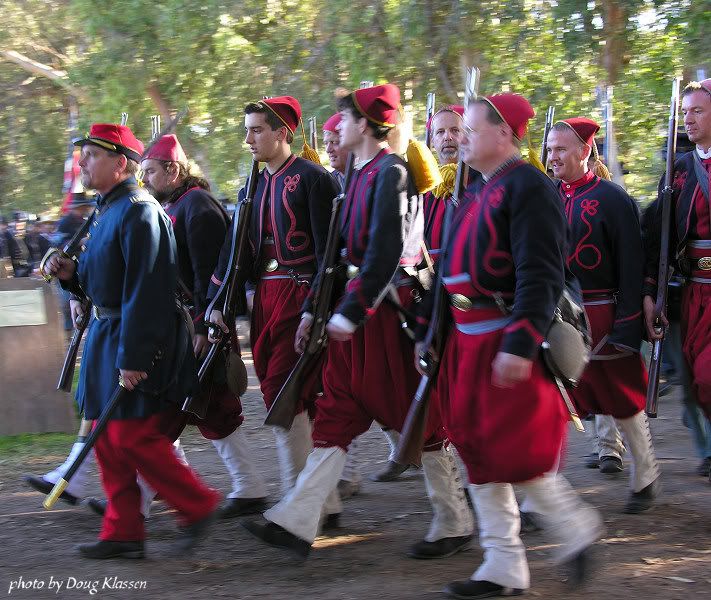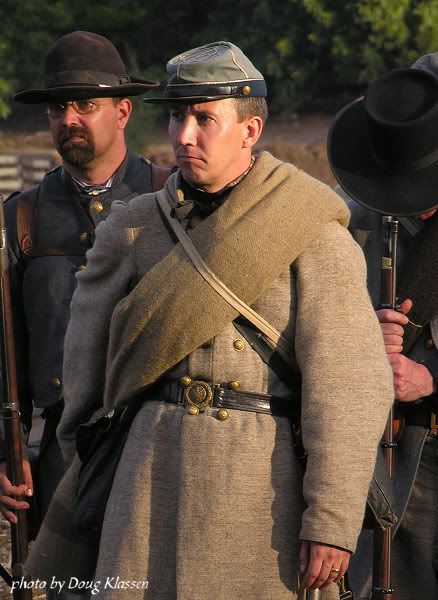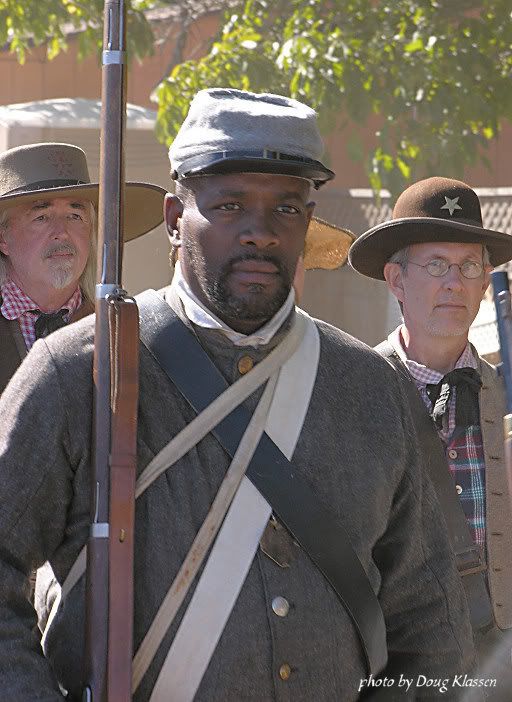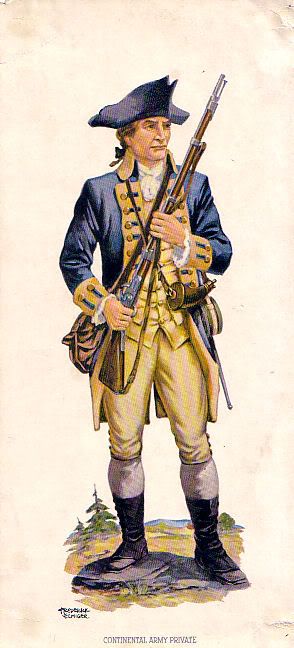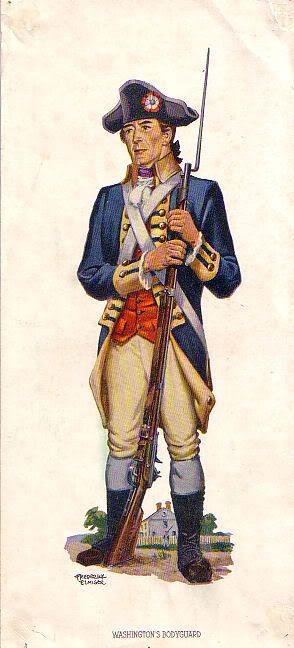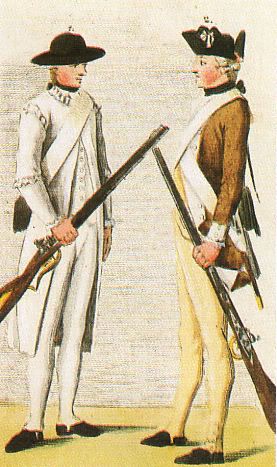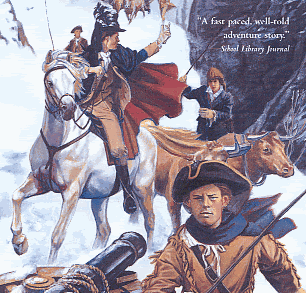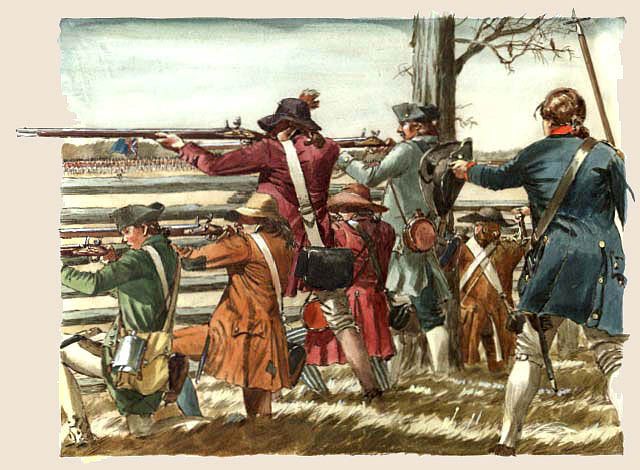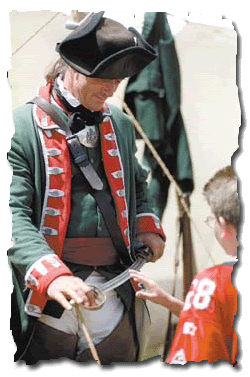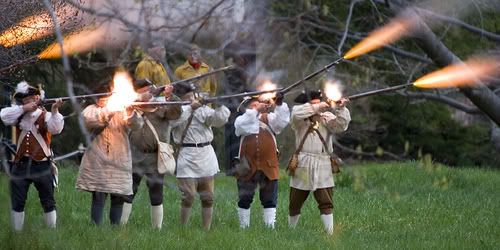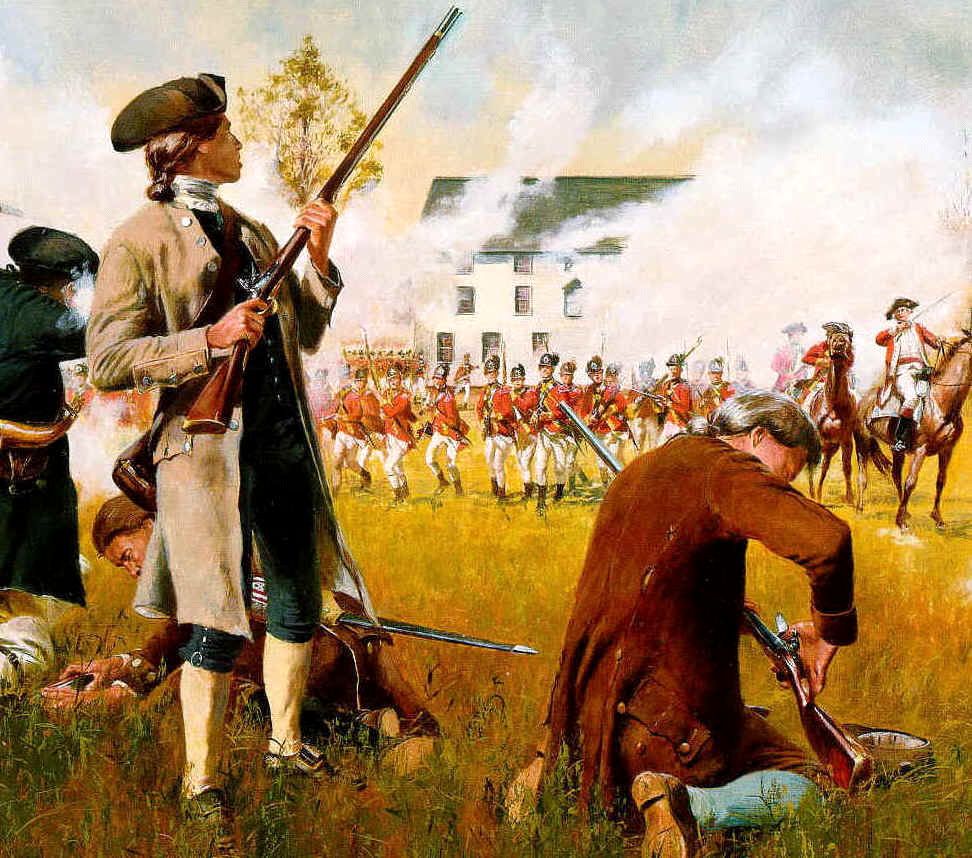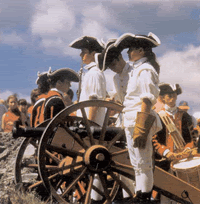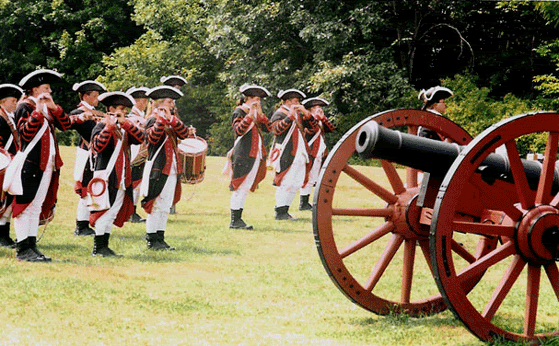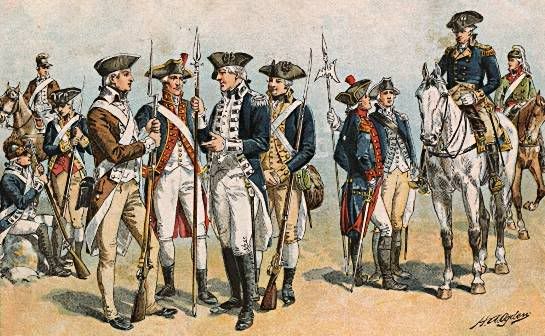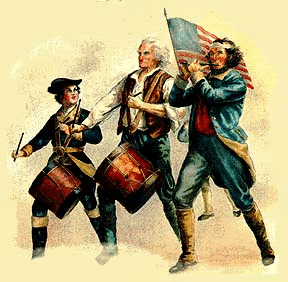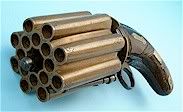From angelfire.com
Brown Bess
1762 | English | .75 Caliber
One of the most common and effective muskets of the American Revolution was the Brown Bess. Used by both the American and British and could be loaded with a single shot or grape shot (multiple balls). This weapon had a short range and was inaccurate (as most muskets were). First used in 1768, the British used this musket throughout the American Revolution, The War of 1812 and the Napoleonic Wars.
The version that is shown here is the Short Land Pattern. Compared to the Long Land Pattern it is shorter, lighter and not as bulky. Most Americans used the Long Land Pattern.
Charleville
1766 | French | .69 Caliber
This French musket was more towrd the end of the American Revolution when the French started to ship arms to help the Americans in the revolution. This musket is firing characteristics are the same as most muskets, short range and inaccurate.
Pennsylvania Rifle
1720 | American | .50 Caliber
The Pennsylvania Rifle (and its many variations) was first developed during the early 18th century. The Long Rifle was the one of the first completly American designs. It was made by the Germans who colonized Pennsylvania (or the Pennsylvania Dutch) who based the Pennsylvania Rifle on the Jaeger Rifle.
The was successfully used as a sniper rifle during the Revolutionary War due to the long range and accuracy that it had. Unlike a musket, which is smooth bore, a rifle has groves which spins a tight fitting ball down the barrel, which improves accuracy. But because of the long loading time they were not effective in the 18th century combat.(See 18th Century Combat)Towards the end of the war the Rifle Men's rifles were sometimes replaced with muskets.
For more information on the Pennsylvania Rifle Click Here
Bayonet
These bayonets are some of the most dangerous weapons of there time. Especially because only about 20% of the lead fired from one army to another hit anything. A bayonet charge at the right time could easy scare the opposing force away. This being true with the Americans. During the early days of the War the Americans were scared of the bayonet and because of inexperience they were useless in the hands of the Americans. (Well, they were not useless, they made excellent tent stakes and worked well for roasting meet over a fire.)
Because of its triangular shape it is very hard to repair. There will always be one side stretching, and breaking the wound open, so if the bayonet did not puncture a vital organ you would probably bleed to death. There was also threat of infection. Also these bayonets are not sharp! A person would have to thrust it into an enemies body, this would more often tear not cut making it even deadlier. To day these kinds of bayonets are outlawed today.
fairly generic pistol







